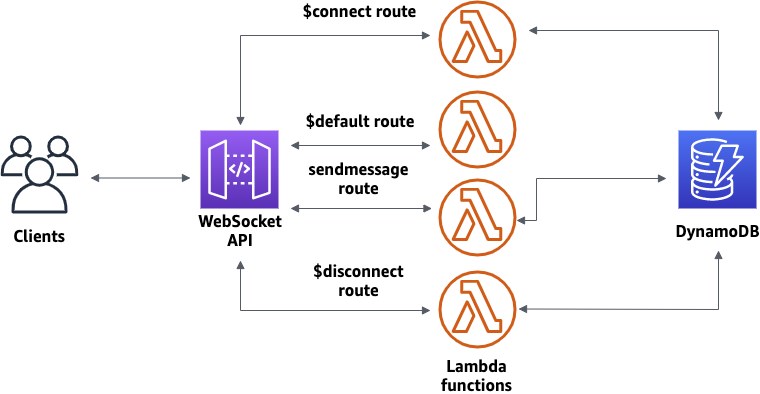To create WebSocket APIs in ASP.NET Core, you can follow these steps:
Set up a New ASP.NET Core Project
- Open Visual Studio or your preferred IDE.
- Create a new ASP.NET Core Web Application project.
- Choose the API template, as this will be the base for your WebSocket API.
Add WebSocket Support in Startup
- Open
Startup.cs(orProgram.csin .NET 6 or later). - In the
Configuremethod, add WebSocket support by callingUseWebSockets().
public void Configure(IApplicationBuilder app, IWebHostEnvironment env)
{
if (env.IsDevelopment())
{
app.UseDeveloperExceptionPage();
}
else
{
app.UseExceptionHandler("/Home/Error");
app.UseHsts();
}
// Enable WebSocket support
var webSocketOptions = new WebSocketOptions
{
KeepAliveInterval = TimeSpan.FromSeconds(120),
ReceiveBufferSize = 4096
};
app.UseWebSockets(webSocketOptions);
app.UseRouting();
app.UseEndpoints(endpoints =>
{
endpoints.MapControllers();
});
}
Create a WebSocket Handler
- Create a new service or class that will handle WebSocket connections.
public class WebSocketHandler
{
private readonly WebSocket _webSocket;
public WebSocketHandler(WebSocket webSocket)
{
_webSocket = webSocket;
}
public async Task HandleWebSocketAsync(CancellationToken cancellationToken)
{
var buffer = new byte[1024 * 4];
WebSocketReceiveResult result;
do
{
result = await _webSocket.ReceiveAsync(new ArraySegment<byte>(buffer), cancellationToken);
if (result.MessageType == WebSocketMessageType.Text)
{
var message = Encoding.UTF8.GetString(buffer, 0, result.Count);
// Process message or forward it
}
else if (result.MessageType == WebSocketMessageType.Close)
{
await _webSocket.CloseAsync(WebSocketCloseStatus.NormalClosure, "Closing", cancellationToken);
}
} while (!cancellationToken.IsCancellationRequested);
}
}
Create a WebSocket Controller
- In your
Controllersfolder, create a new controller that listens for WebSocket connections.
[ApiController]
[Route("api/[controller]")]
public class WebSocketController : ControllerBase
{
private readonly WebSocketHandler _webSocketHandler;
public WebSocketController(WebSocketHandler webSocketHandler)
{
_webSocketHandler = webSocketHandler;
}
[HttpGet("connect")]
public async Task<IActionResult> Connect(CancellationToken cancellationToken)
{
if (!HttpContext.WebSockets.IsWebSocketRequest)
{
return BadRequest("WebSocket request expected");
}
var webSocket = await HttpContext.WebSockets.AcceptWebSocketAsync();
await _webSocketHandler.HandleWebSocketAsync(cancellationToken);
return Ok();
}
}
Configure Dependency Injection
- In
Startup.cs(orProgram.csin .NET 6), register theWebSocketHandleras a service.
public void ConfigureServices(IServiceCollection services)
{
services.AddSingleton<WebSocketHandler>();
services.AddControllers();
}
Handle WebSocket Messages
- In your
WebSocketHandler, you can add logic to process WebSocket messages. This includes reading, sending, and handling different types of messages.
For instance, in the HandleWebSocketAsync method:
if (result.MessageType == WebSocketMessageType.Text)
{
var message = Encoding.UTF8.GetString(buffer, 0, result.Count);
// Send a response back to the client
var response = Encoding.UTF8.GetBytes($"You said: {message}");
await _webSocket.SendAsync(new ArraySegment<byte>(response), WebSocketMessageType.Text, true, cancellationToken);
}
Run the Application
- Now, run your application. You can test the WebSocket API using a WebSocket client, such as Postman, a WebSocket testing tool, or a custom JavaScript client in the browser.
Testing WebSocket in JavaScript
You can test your WebSocket API using JavaScript as follows:
const socket = new WebSocket('ws://localhost:5000/api/websocket/connect');
socket.onopen = () => {
console.log('WebSocket connection established');
socket.send('Hello WebSocket Server!');
};
socket.onmessage = (event) => {
console.log('Message from server:', event.data);
};
socket.onclose = () => {
console.log('WebSocket connection closed');
};
Handle Errors & Timeouts
- Add proper error handling to your WebSocket logic. Handle scenarios such as client disconnects or timeouts.
- Ensure to handle both inbound and outbound message scenarios.
With these steps, you've created a WebSocket API in ASP.NET Core! This allows you to send and receive real-time data between a client (e.g., browser or mobile app) and your server.




Leave Comment